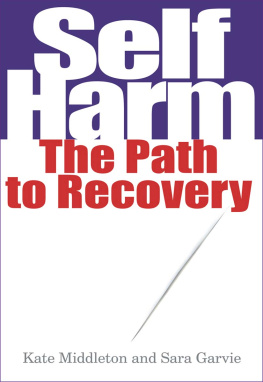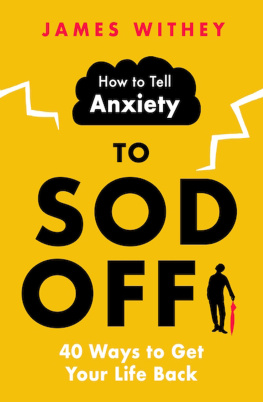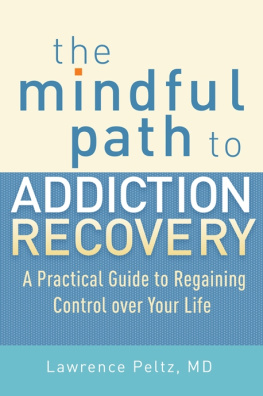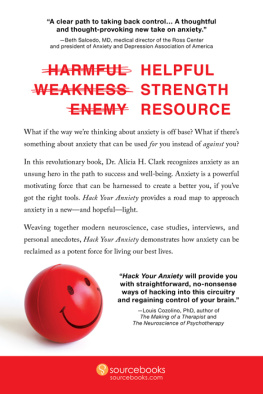The Anxiety Encyclopedia
Your Path to Recovery
By
Jotham Sadan
Copyright 2020 by Jotham Sadan
All rights reserved. No part of this book may be used or reproduced by any means, graphic, electronic, or mechanical, including photocopying, recording, taping, or by any information storage retrieval system, without the written permission of the publisher except in the case of brief quotations embodied in critical articles and reviews.
CONTENTS
Preface

F or many of us who have struggled with anxious symptoms, it all started with a panic attack. The adrenaline started pumping through our veins, our heart rate doubled, and our brain tried to tell us we had to get out, to escape some invisible force that was closing in on us. But unlike the other panic attacks, this one would not let up. Minutes turned to hours, then to days and weeks. Our constant worrying about another panic attack forced us to retreat further and further into ourselves. For me, that panic attack was on Tuesday, April 25, 2017, at around 10:00 a.m. This was not the first panic attack I had ever had, but it was the one that marked my transition from stressed out college student to someone who could not eat, drink, or sleep, much less leave the house. Looking back, this panic attack fractured my life into four distinct parts: the years I spent just coping with anxious symptoms; the months of constant panic; the slow, tooth-and-nail climb out; and the eventual freedom from the lifelong shadow that anxious symptoms and excessive worrying cast over me.
If my experience sounds familiar to you, you are not alone. According to the Anxiety and Depression Association of America (ADAA) , around 40 million Americans are believed to have trouble with anxious symptoms, ranging from mild to severe, generalized to situation-specific, and mental to physical compulsions. This accounts for an astonishing 18% of the total populationone out of every five people.
For most of us, this is a lonely experience. We might not have the money, time, or access to treatment, and even those of us who do can struggle to see results. Our therapist or mental health professional might be experienced in their field, but they might not know how to treat excessive worrying. Trying to share our complex symptoms with someone who has not experienced them is an exercise in futility.
Worst of all, despite all of the discussion these days, no one has been able to give a satisfying explanation of how anxious symptoms and excessive worrying actually work. There is a mountain of research on the effects of environment, genetics, and neurotransmitters, and yet no one has been able to put a finger on what happens when we are anxious and why.
This has led to thousands of treatmentstherapies, medications, mineral supplements, exercises, and meditationsbut very few are backed by science, and none provide a model that explains exactly why it works.
That was my motivation for writing this book. I wanted to create a single source to bring together all the medical and psychological knowledge we have of anxiety, then use that knowledge to construct a new model that ties it all togetheran anxiety encyclopedia. That way, we can build a treatment method that guarantees recovery, no matter how severe the symptoms.
Thank you for reading The Anxiety Encyclopedia . Please enjoy.
Introduction
My heart is beating so fast. Am I having a heart attack?
What are all of these weird thoughts? Am I going crazy?
My chest feels like its about to explode. What if I am dying?
I f you have had high anxiety before, these thoughts and symptoms probably sound familiar. On the lower end of the spectrum, anxiety can cause a rise in heart rate, muscle tightness, and dizziness, negatively impacting our life. On the severe end, familiar to far fewer of us, things get a lot scarier. Shortness of breath so intense it feels as if we could faint at any moment. Heart rate nearing its peak without moving a muscle. Nausea strong enough to prevent us from eating for days. Then there are the mental symptoms. The feeling that the world is closing in on us. Dissociation causing us to feel disconnected from our surroundings. Bizarre thoughts about violent, depraved, or nonsensical things that make it seem as if we are losing touch with reality. And sometimes worst of all, the fear that, even in our better moments, it will come back.
I want to start by addressing the question you have probably asked yourself a hundred times: Will this anxiety I am experiencing last forever? The answer, which I say with absolute confidence, is no . An anxiety disorder, when treated properly, is nothing more than a temporary period.
Googling is anxiety curable will bring up plenty of conflicting answers, with an even split of yes, anxiety is curable, and no, it is only manageable. So let me clear things up: the mechanism of anxiety is like the mechanism behind physical paina sensation our body makes when it is driven out of equilibrium. When we lift too much weight or run too quickly, pain is our bodys way of telling us to slow down. In the same way, when we are in danger or need to focus, anxiety is our bodys way of giving us a boost. Since experiencing pain and anxiety in this way can be helpful, they are not something we want to eliminate completely.
However, there are times when our body is driven so far out of equilibrium that these mechanisms bring us great discomfort. Just like we feel overwhelming pain when we maintain bad posture for years, certain behaviors will cause us to experience overwhelming anxious symptomssymptoms that may come up in random and inappropriate situations (or if you are like I was, all day every day), and far more intensely than those around us.
In these cases, the symptoms are not the problem. Rather, there is a separate problem that causes us to experience them. When we work on our posture, doing physical therapy and choosing to sit upright more often, our body gradually returns to normal, and the pain slowly goes away as a result. Anxiety is the samethere are problems that cause our body to produce anxious symptoms far more than is necessary. When we address these problems, our body slowly returns to normal, reducing the strength of anxious symptoms until they only pop up occasionally and at low strength. In that sense, anxiety disordersperiods of uncomfortably high anxietyare absolutely curable.
Unfortunately, the discussion around why anxious symptoms happen has become two-sided, with neither side able to put their finger on the issue. On one end, people unfamiliar with anxiety disorders argue that everyone has to deal with the same anxious symptoms, despite never having a panic attack or an episode of depersonalization themselves.
On the opposite end, some argue that these anxious symptoms pop up because of an inescapable genetic or chemical imbalance. Doctors who were never educated on the subject see their patients suffering and rush to help them the only way they know how: medication and management techniques. But this management-focused approach only came about recently. We have known about anxious symptoms for over a hundred years, and up until the 1980s, they were not considered a chronic condition at all. In fact, Claire Weekes, doctor and founder of the most successful treatment to date, argued that management-focused treatments only temporarily dulled anxious symptoms and did nothing to treat the root cause.













